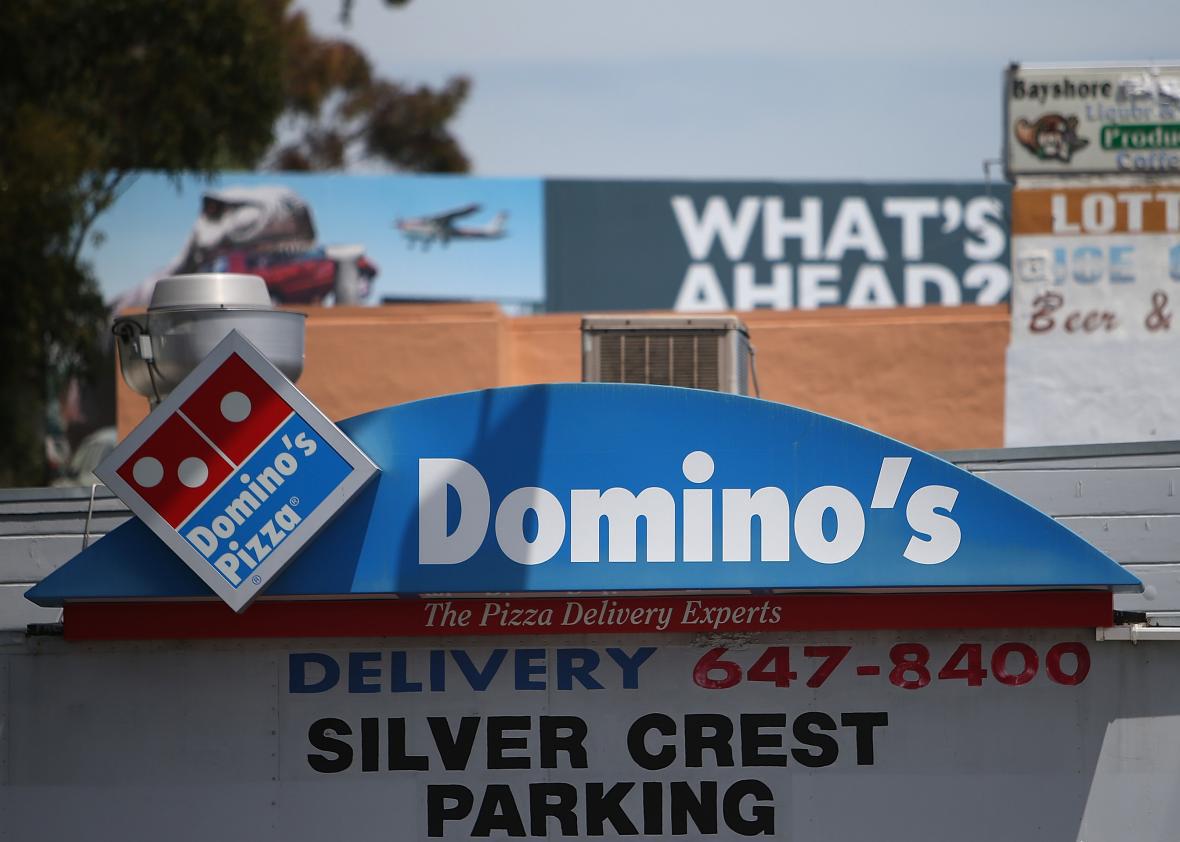Domino’s stock is hotter than a jalapeño pizza, up 46 percent since the start of the year. In a third-quarter earnings report released Tuesday, America’s largest pizza delivery company announced that revenues were up 17 percent over last year, which is actually fairly typical of the chain’s recent financial performance.
But it is a little confusing. When, and why, did the world start loving Domino’s?
I’d insert a joke here about the taste, but as a New Yorker, I could lose my rent-controlled apartment and municipal retainer fees for even ordering the stuff. But many people are saying that even here at the heart of the Pizza Belt, where Domino’s operates a modest 70-odd locations, the pizza has obtained a kind of cult status. Domino’s pizza is not an ironic fetish; it’s a genuine predilection.
It was only seven years ago that a couple of North Carolina Domino’s employees filmed themselves smearing their snot all over Domino’s foodstuffs. It was only six years ago that the tag line of the company’s big ad campaign was, basically, We Know Our Pizza Was Bad.
I guess they made it better. Just as importantly, perhaps, they made it easy to get. More than half of all U.S. Domino’s orders are made online—that’s up 10 percent over the past two years—and more than half of those are made on mobile. The company’s “Anyware” service allows you to program your regular order, then order it instantly through Facebook Messenger, Amazon Echo, text, and other platforms. You can also tweet a pizza emoji—which, incidentally, is the most-used emoji on Venmo—at Domino’s handle.
What makes Domino’s good run interesting for those of us who are not food-service stock-pickers, or who prefer our pizza local, is that it comes during a period of slowing growth in fast food. Average same-store sales growth in U.S. restaurants fell all through 2015, from 4.3 percent down to 1 percent. Domino’s, meanwhile, posted double-digit sales increases all year. (It also outperformed virtually every fast-food competitor in the first quarter of 2016.) For this, according to a report from Trinity Capital Investment Banking, we can thank its “very proactive” approach to new technology.
This summer, the financial press started chattering about a “restaurant recession,” after an analyst downgraded 11 industry stocks, and wrote that decelerating restaurant growth was an early sign of a 2017 recession. Whatever you think about that, it’s true that restaurant growth is slowing. Year-over-year third-quarter growth in “food services and drinking places,” according to the Census Bureau, was just 5.6 percent, the lowest quarterly growth rate in more than two years.
It’s been posited that eating out’s loss might be pizza delivery’s gain, as consumers stay home and worry about the election. But Domino’s is soundly beating both Pizza Hut and Papa John’s. Like any millennial looking to broaden the old skill set with made-up lingo from Silicon Valley, Domino’s no longer describes itself as simply a pizza delivery company. It’s also the “recognized world leader … in digital ordering platforms.” Pizza, disrupted.
